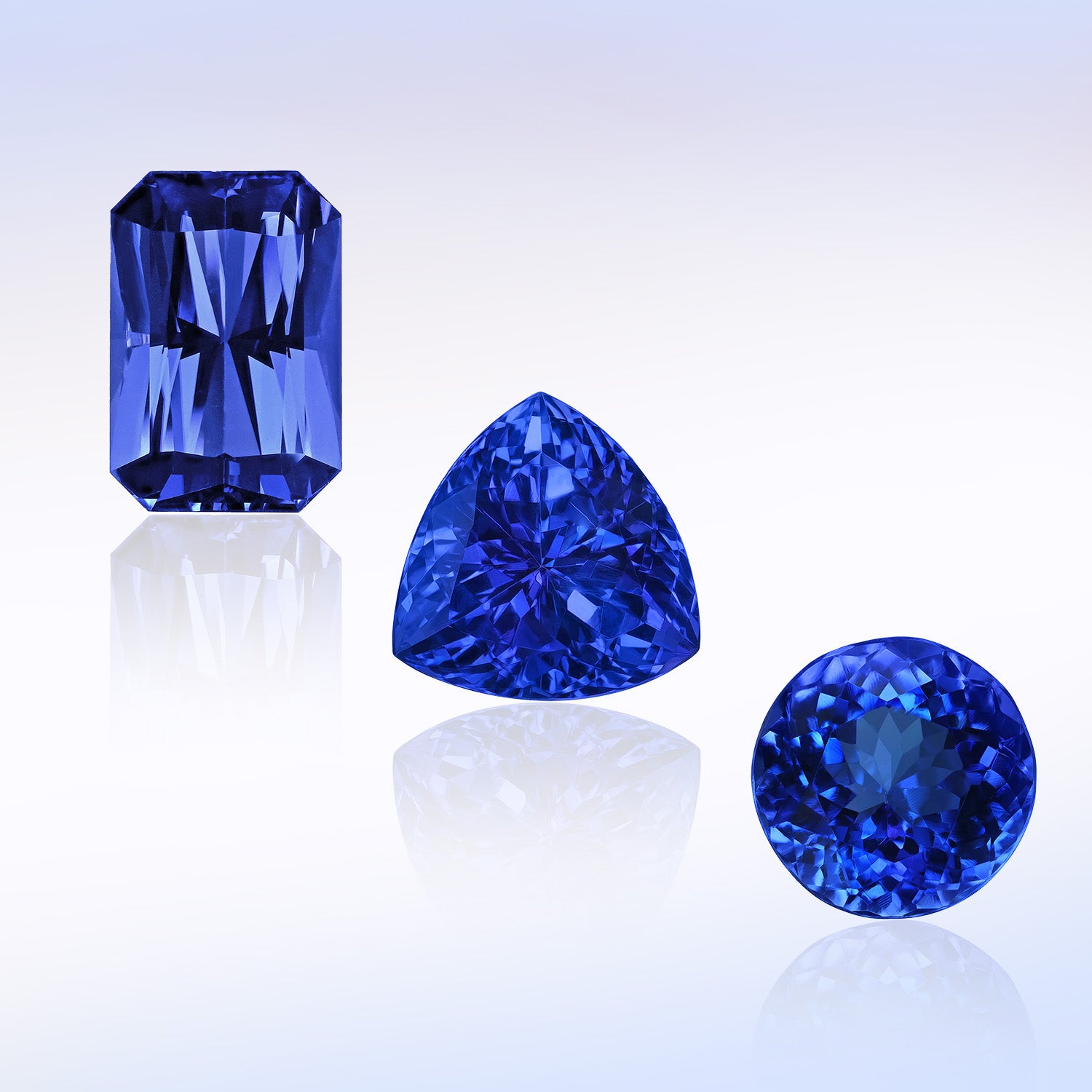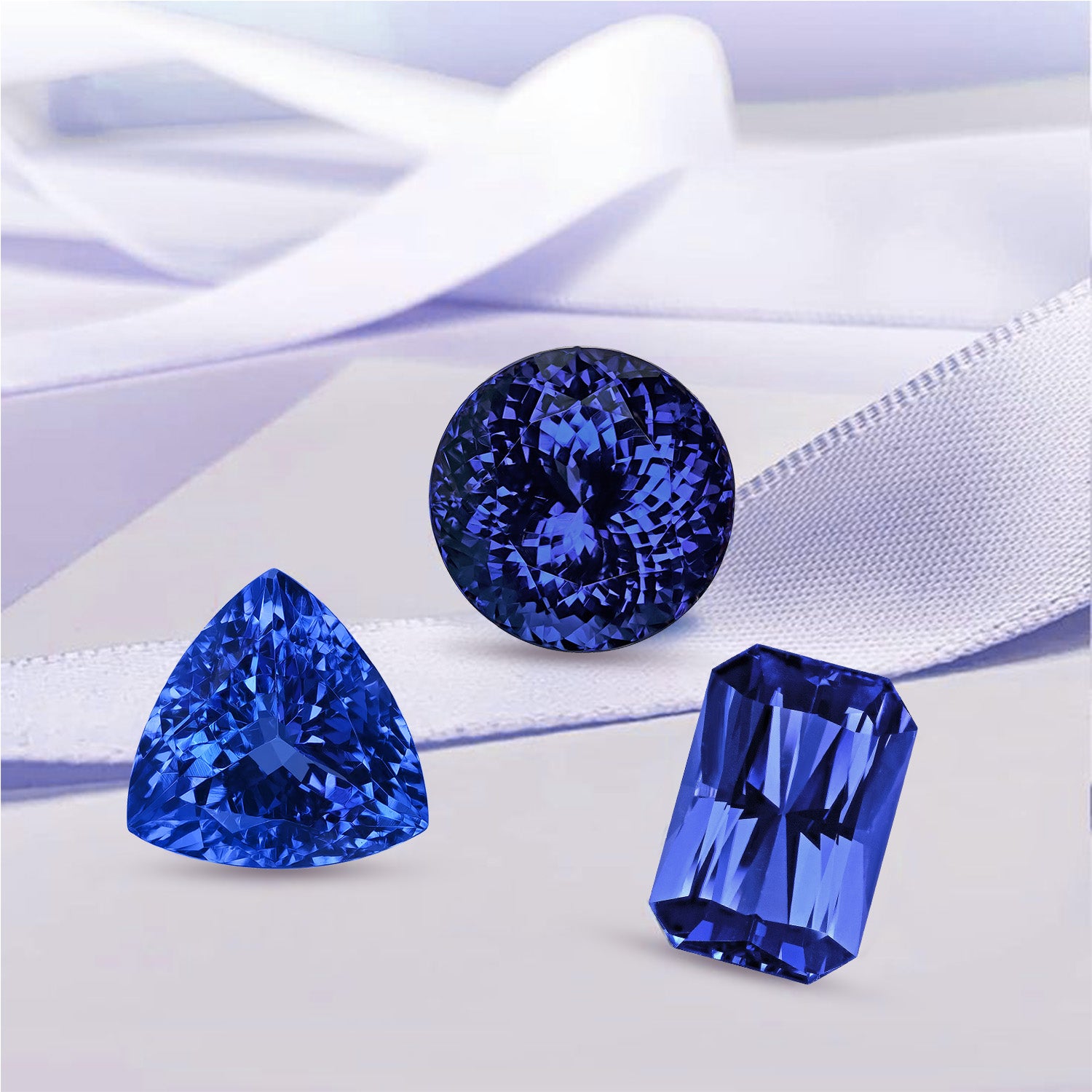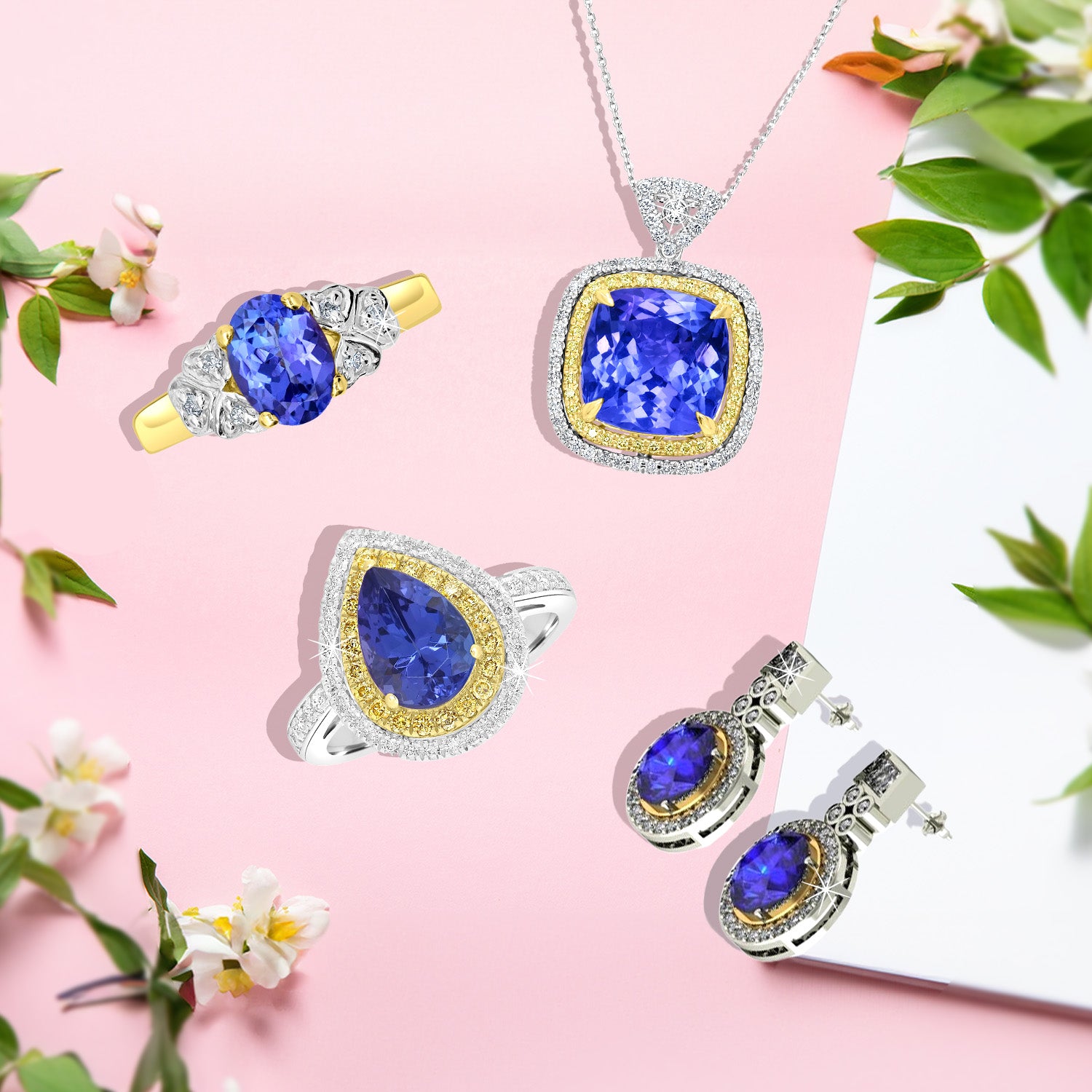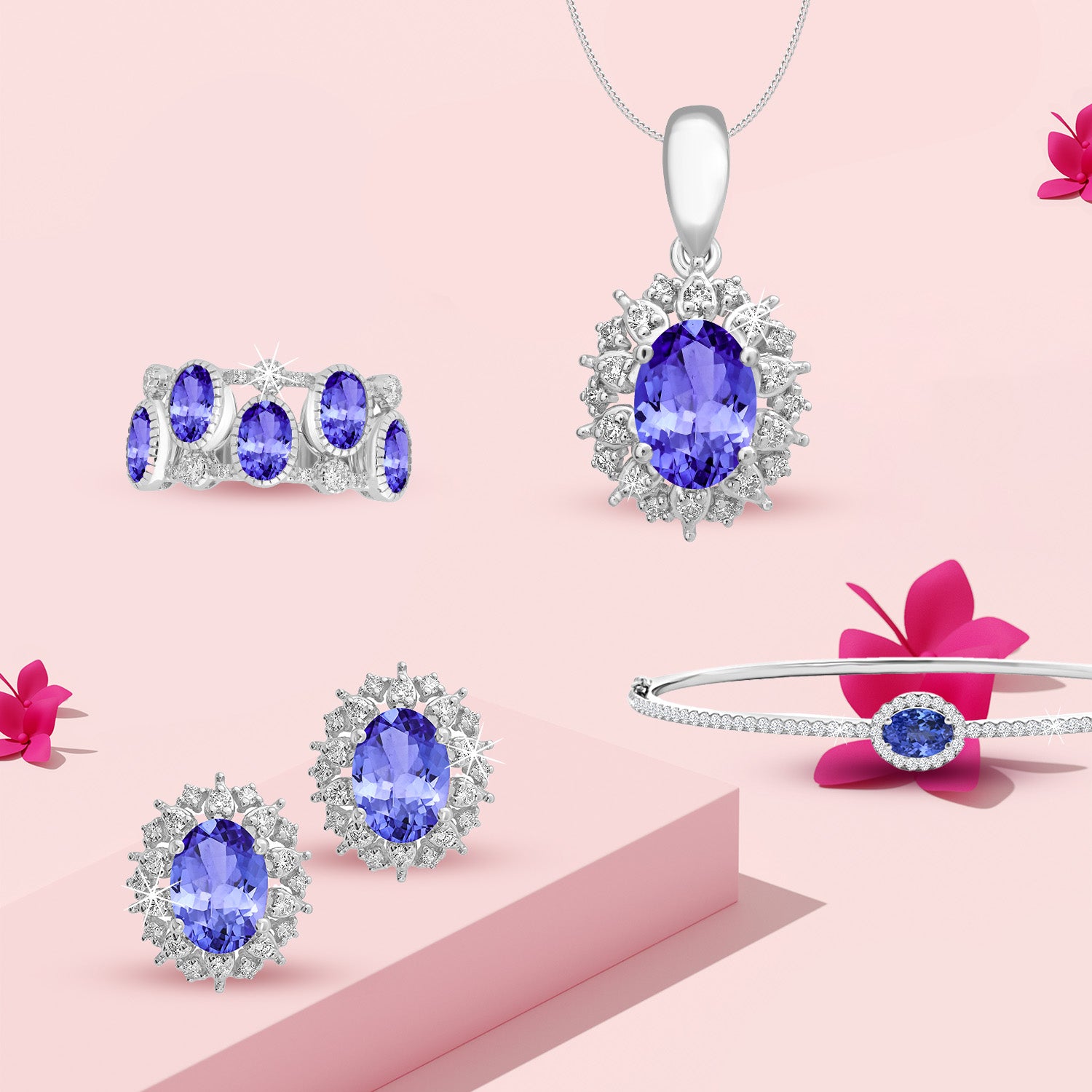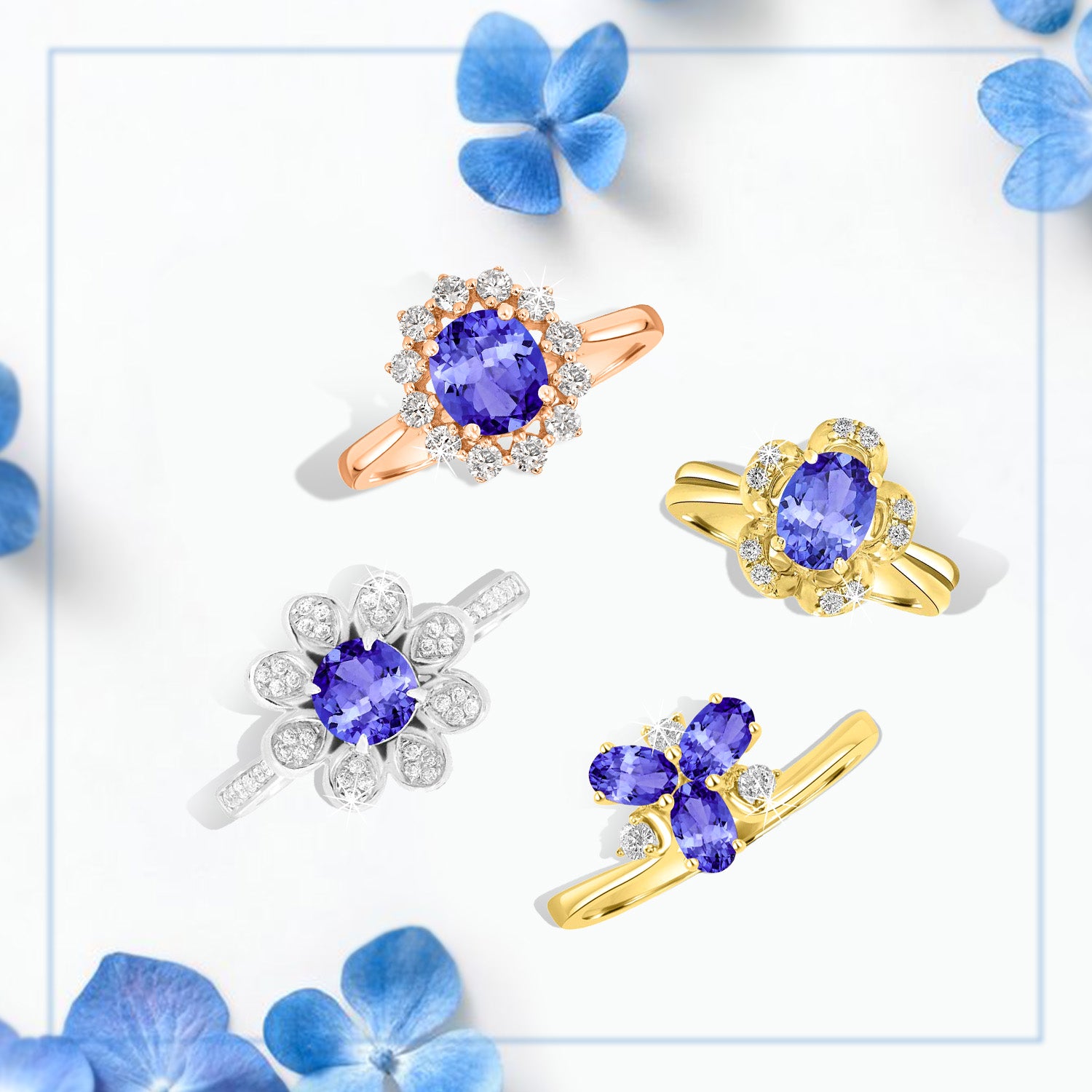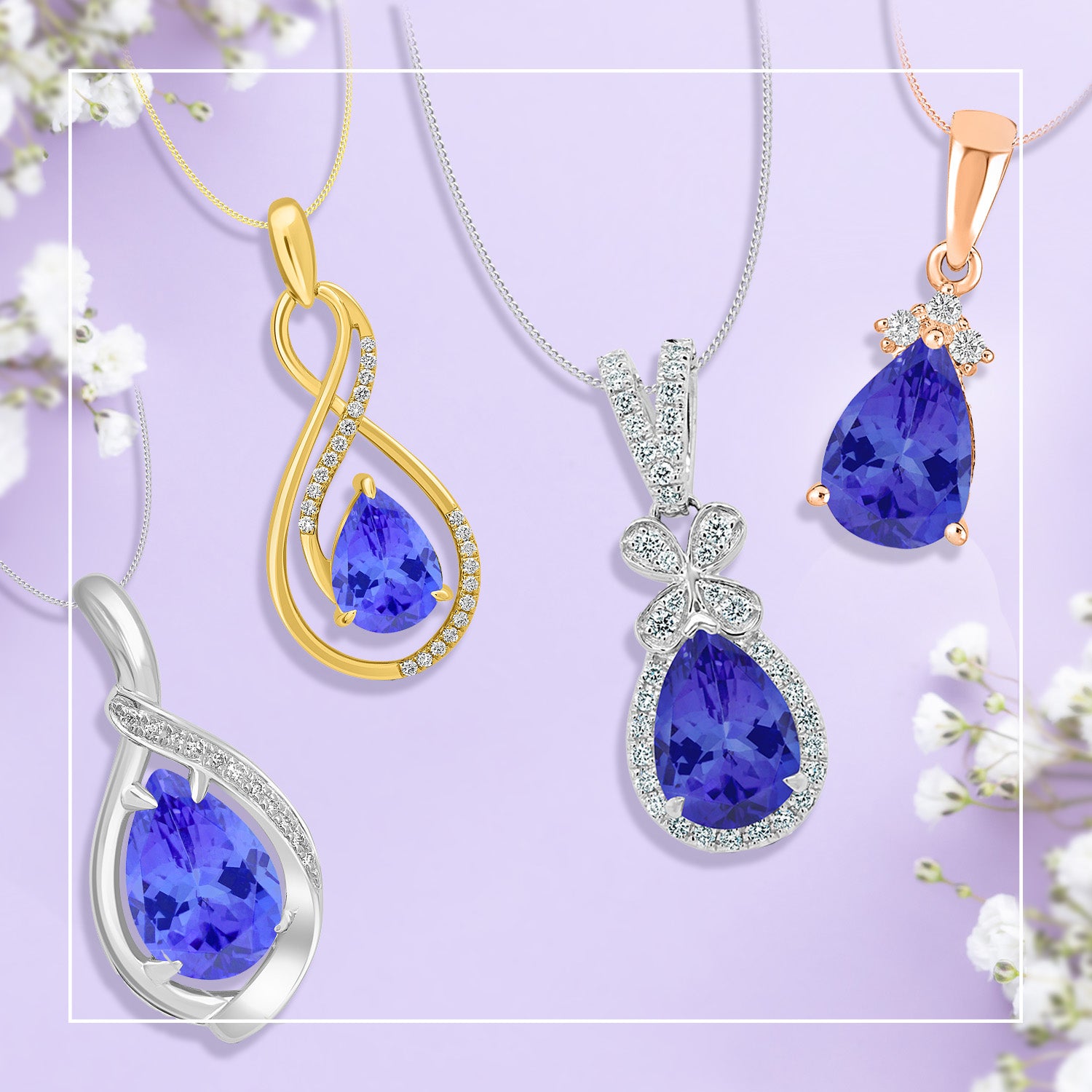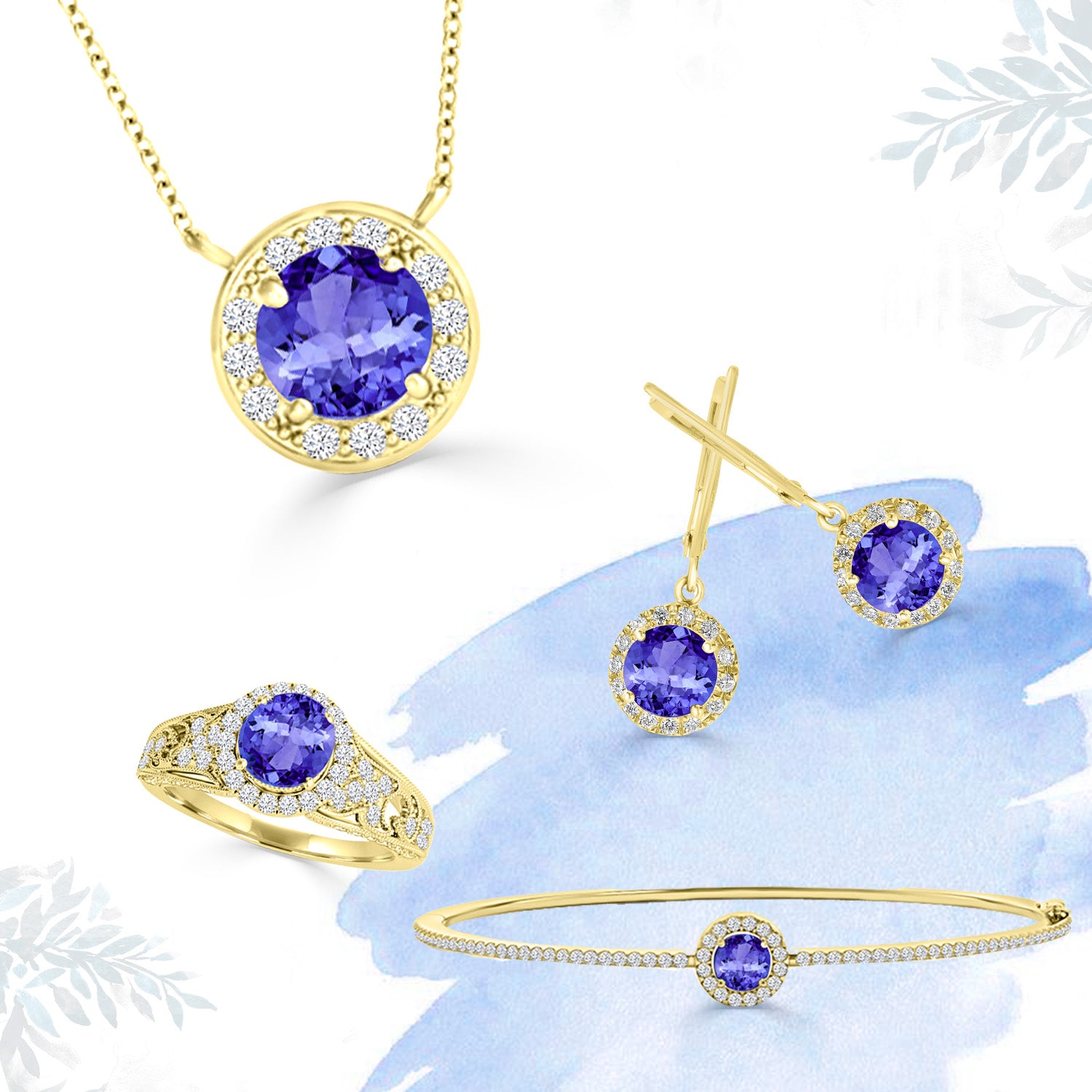- No products in the cart.
Unlike many gemstones that have been in use for centuries, tanzanite’s history is relatively modern and new. From deep in the foothills of Mount Kilimanjaro, Tanzania, comes Tanzanite, a gemstone with only a single known source that has become the most intriguing and desirable of modern times.
Tanzanite is considered 1000 times rarer than diamonds and tanzanite jewelry is extremely valuable and coveted, both for the gems rarity as well as its stunning beauty.
History
In 1967, Masai tribesmen stumbled upon a cluster of highly transparent, intense violet- blue crystals in the Merelani region of northern Tanzania. Ancient tectonothermal events are the reason behind the creation of beautiful zoisite which has come to be known as ‘Tanzanite’. But it was also thanks to a lightning bolt that struck the land setting the grassland on fire. This is what turned the brown zoisite crystals blue when the Massai tribesmen found them. A local named Manuel DeSousa was shown the location of the crystals and he staked the first mining claim in 1967.
Tiffany & Company recognized the growing popularity of the gem and agreed to become its main distributor. Instead of popularizing it simply as blue zoisite, which they believed would not sound too appealing to women, they named it Tanzanite, to highlight its exclusive geographical location. It was introduced in 1968, with a promotional campaign and later turned into enchanting tanzanite jewelry in various forms. Soon tanzanite engagement rings and even tanzanite wedding rings, necklaces, bracelets, earring, etc. started becoming a trend.
Mining process
Originally, tanzanite was found on the surface, but the mining process gave way to tunnels and pits about 1000 metres beneath the surface. The rocks are broken up using explosives like dynamite. Once this process is complete, oxygen pipes are then inserted into the pits to reduce the presence of CO2.
Sorting
This can be a daunting task. The non-gem materials are removed and the rest is collected and placed into groups. Good quality gems are processed for more color, clarity, and carat grading.
Heat treatment
With a colour that shifts from light blue to lilac or from indigo to dark purple, tanzanite is a versatile and truly intriguing gemstone. In its natural state it is brown, blue, and violet, but heat treatment is used to remove all traces of brown and burgundy.
For all things tanzanite, Top Tanzanite is a reputed leader in the space and is directly connected to it’s mining in Tanzania, the world’s largest and only producer of tanzanite. With over 42 years of experience, it has one of the largest collections of tanzanite in the world. Tanzanite rings, earrings, pendants and other products from Top Tanzanite, are undeniably striking and the stones offer a unique beauty unachievable by most other gems.


